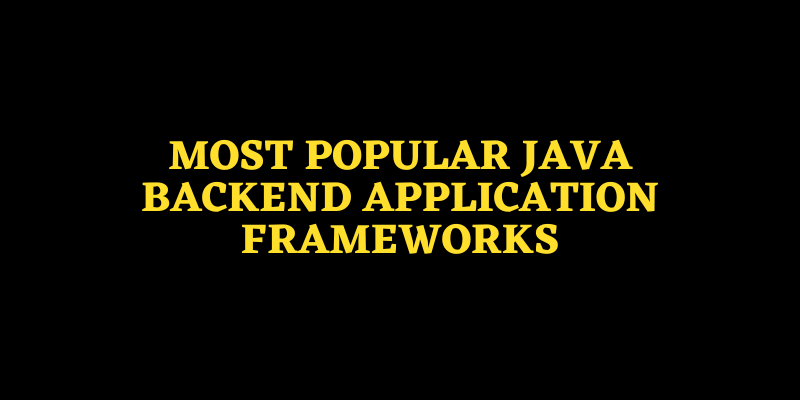
In this blog, we will discuss the popular java backend application frameworks. This list is based on the Java ranking and data from GitHub downloads and blog postings, among other sources. All three of these frameworks have sizable programming communities, but each has advantages and disadvantages of its own.
At FITA Academy, Java Training in Chennai includes course materials and hands-on Java training for an in-depth learning experience.
Java Backend Application Frameworks
Any good company would have a user interface that is easy to understand. But the backend of an application must also be considered for the frontend to function correctly. Backend development, also known as server-side development, is responsible for the behind-the-scenes operations of web development, including database interactions, user authorization, and URL routing.
Java has been the most frequently used programming language for over 20 years. It has many backend frameworks, but their dependability and adaptability differ significantly. The most widely used Java backend frameworks today are:
- Spring Framework
- Struts
- Hibernate
1. Spring
One of the most reliable and adaptable backend frameworks is the Spring Framework. It has some unique modules that give programmers a selection of application tools. This framework configures application components in loose couplings using the ideas of Dependency Injection and Inversion of Control, helping to increase the application’s responsiveness.
Also, Spring offers a data access framework that makes it simpler to deal with many of the challenges of using application databases, such as:
- Management of resources and unwrapping
- treating exceptions
- Participation in transactions
Moreover, there is a steep learning curve because Spring is such a robust framework and can offer many alternatives. The framework’s intricacy and the abundance of choices might need to be clarified, especially for inexperienced developers.
2. Struts
By minimizing XML configuration and offering standards in place of configuration, Apache Struts aims to simplify web development. Strut offers simple, easy-to-implement designs thanks to the Model-View-Controller (MVC) pattern.
Each of the three elements of this design is essential to making applications function well:
- The program depends on model components existing in a remote database.
- Views are employed to control user interactions.
- Rules that depend on user input are implemented using controllers.
- Because there is no business-specific processing involved in the presentation or view of the webpage when this pattern is used, this Java backend framework is more straightforward for novices.
With the help of the Java Online Course, you may learn how to develop web applications utilizing Java Technologies, including Java Servlets, JDBC, and Java Programming.
3. Hibernate
Hibernate, a framework that offers an abstraction layer for interacting with your database, from creating connections to implementing CRUD activities, is another well-liked Java backend framework. It’s important to remember that Hibernate is not an independent framework and is intended to solve only some problems with Java Database Connectivity (JDBC). But JDBC is considerably simpler to use because it supports object-level associations and has an abstraction layer.
So far, we have discussed the popular java backend application frameworks. Java continues stating its agility and viability. If you’re a seasoned developer, you should become proficient with Spring. Use Struts for more straightforward applications or people without much coding experience. Use Hibernate to interface with databases quickly. These frameworks are well-liked, backed by a sizable development community, and will significantly simplify your backend operations.
Enrol in Java Training in Coimbatore at FITA Academy to gain a better knowledge of Java backend application frameworks.